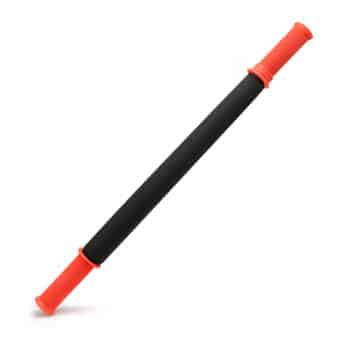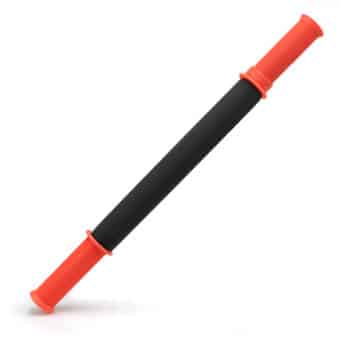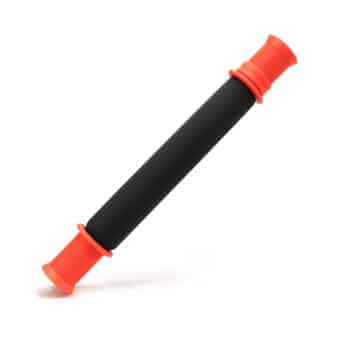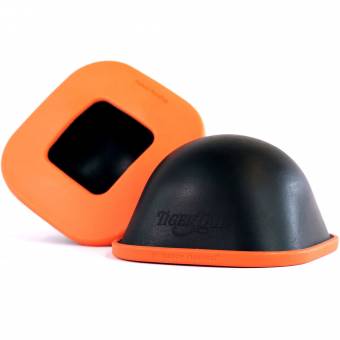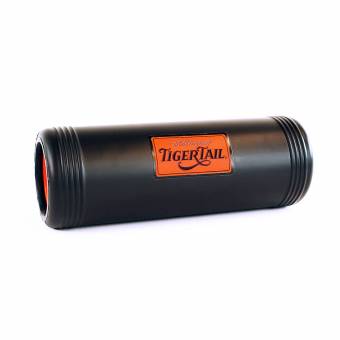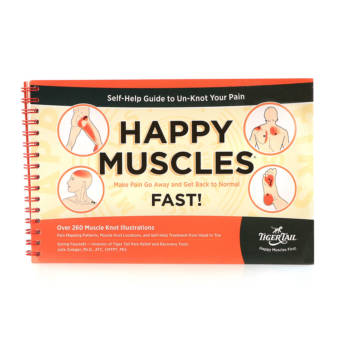Tools That Can Help Ease Hamstring Pain
Muscle Knots in Hamstring
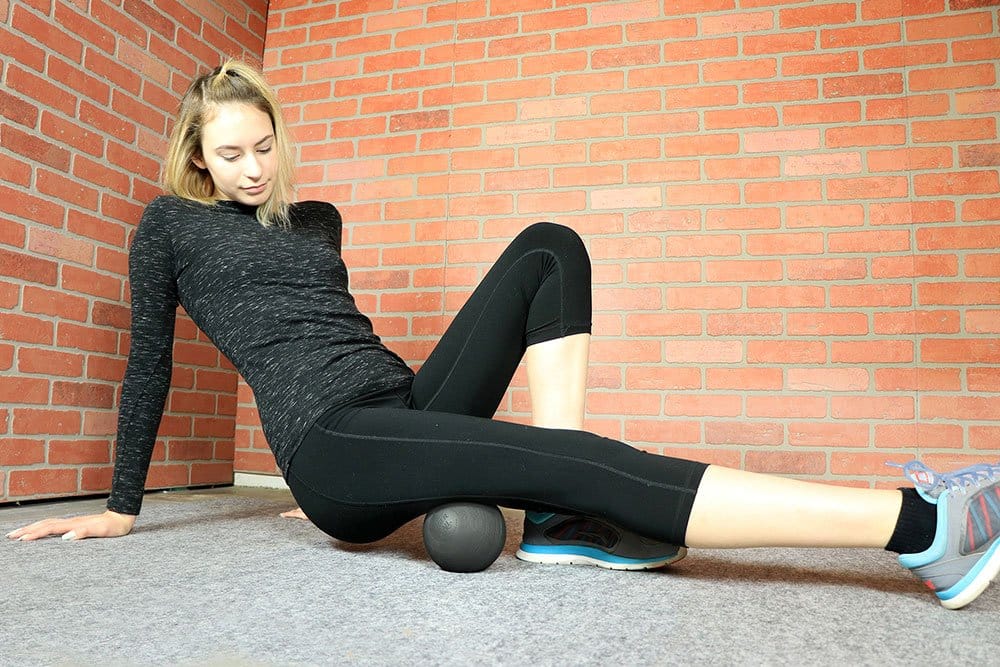
Three different muscles make up the hamstring group and are responsible for extending the hip and bending or flexing the knee. Muscle knots in the hamstrings, which are located in the back of the thigh, can cause pain in the back of the thigh but additionally may cause pain in the buttocks area and the lower leg. Tight hamstrings can also cause lower back pain.
Hamstring muscle knots, which consist of tight and contracted muscles, are indicated below by a black dot. The red area in the illustrations indicates “referred pain” – meaning, the pain you feel is often not in the location of your trigger point until you press on it. As an example, you may have a dull ache behind the knee, but the trigger point may actually be in the hamstrings. For a comprehensive look at more than 260 different pain map illustrations throughout the body, you may want to purchase the Tiger Tail Self-Help Guide to HAPPY MUSCLES.
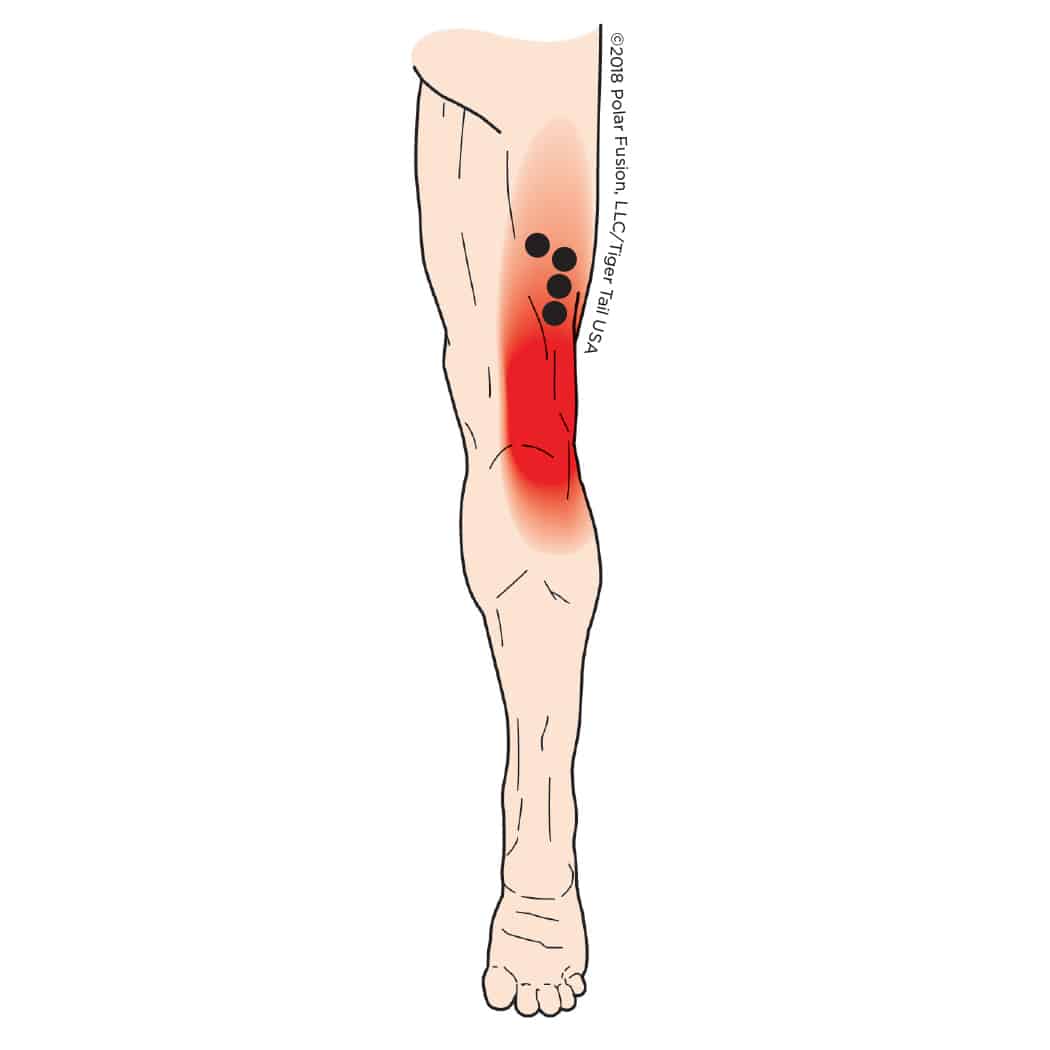
Muscle knots in the Biceps Femoris, located on the back of the thigh, are part of the hamstrings group.
Common Conditions Relating to Hamstring Pain:
- Hamstring pulls
- Sciatica-like symptoms
- A dull ache behind the knee
- Lower back pain due to tight hamstrings
- Stiffness, poor flexibility
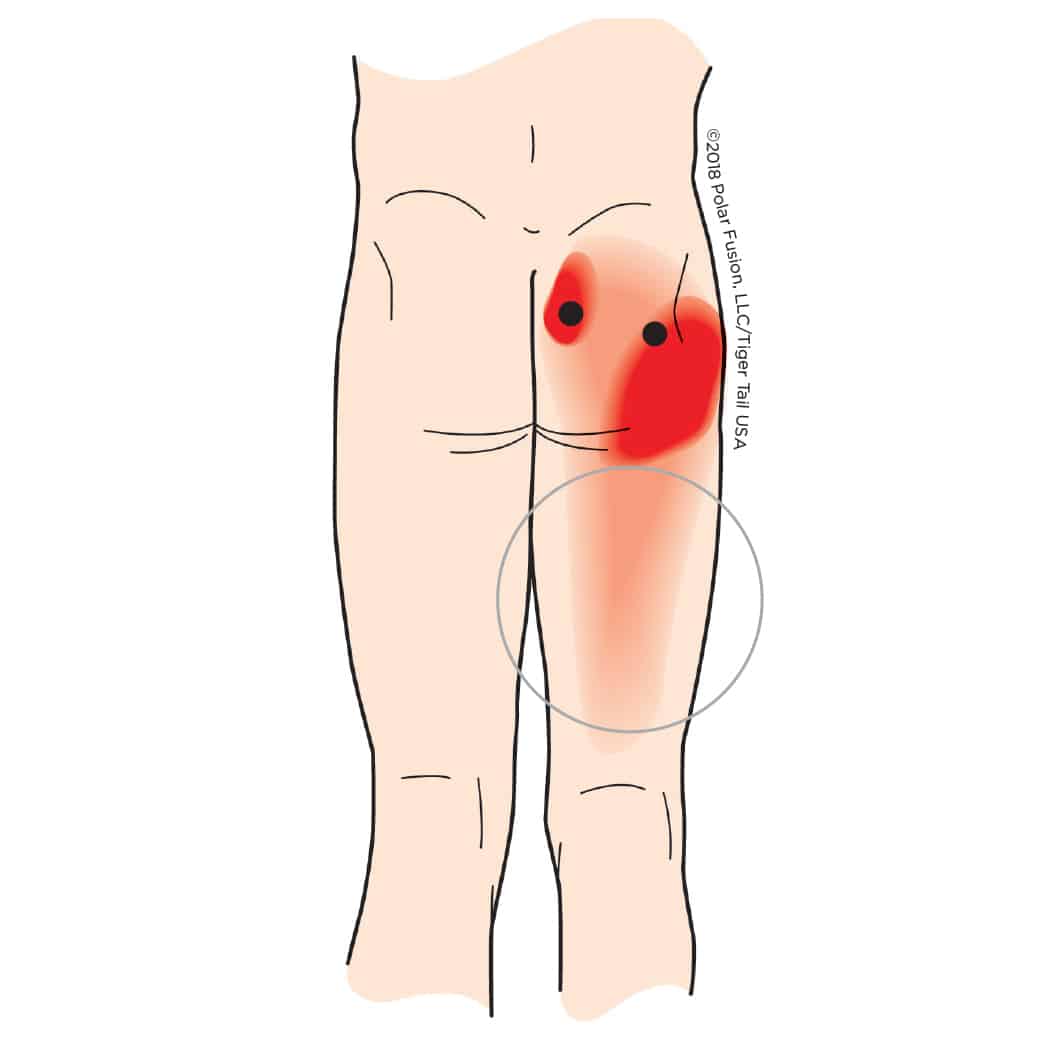
Knots in the Piriformis, a pear-shaped muscle in the gluteal region, can cause pain in the hamstrings.
Tips for Happier Muscles:
- Locate the muscle knot by applying pressure to the area causing pain. A muscle knot can be actively painful, or you might not even know it exists until you put pressure on it.
- Rub the muscle knot to allow blood and oxygen to circulate freely to that muscle area.
- Find the right pressure. When you press on a muscle knot with just the “right amount of pressure”, it can make you laugh and cry at the same time because it can “hurt so good”. Pressing too hard, however, it can make you cry for mercy!
- If you gently rub the muscle knot you may feel tenderness in both the muscle and the muscle knot. Sometimes, the referred pain symptoms are able to be reproduced when pressure is applied to the muscle knot.

